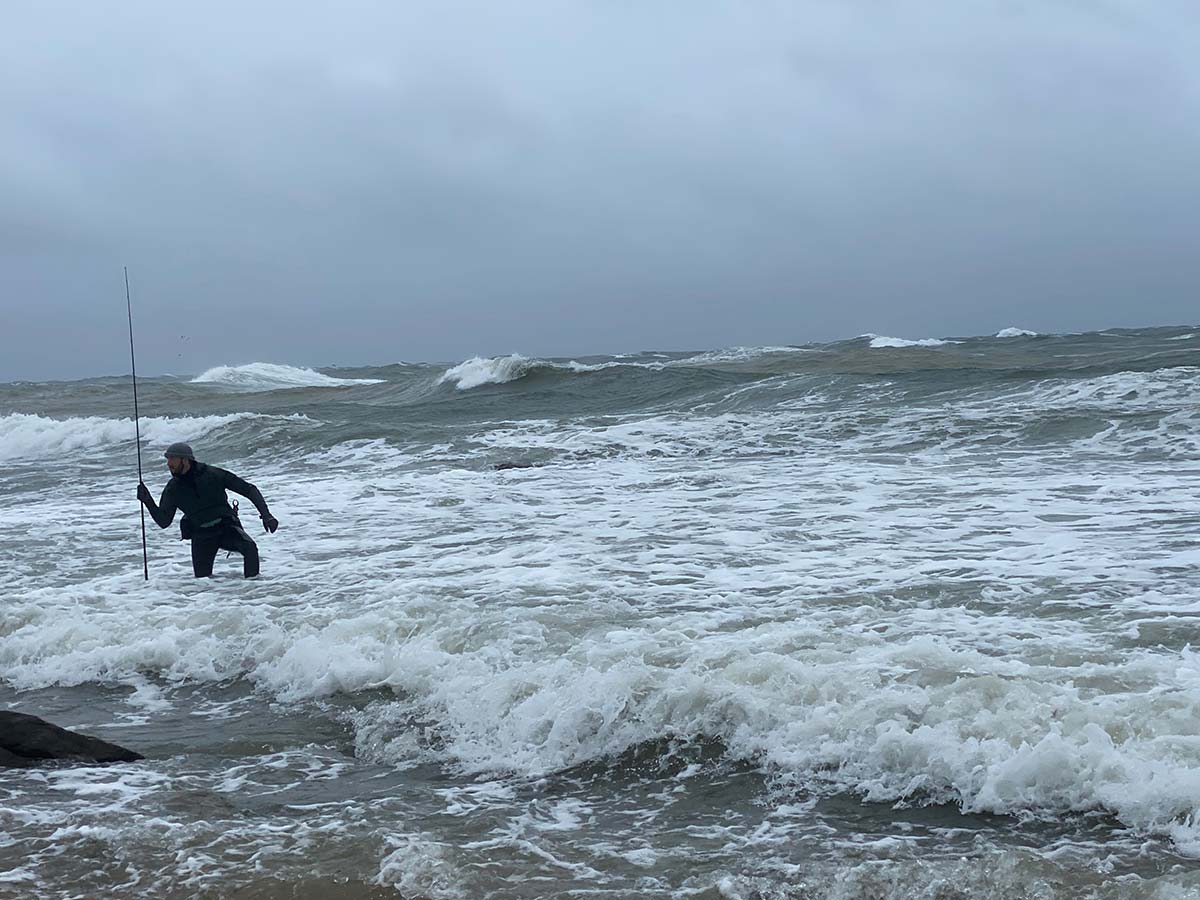
When it starts blowing, we’re going!
Almost every end of September or beginning of October, the region notoriously gets hit be strong northeast winds for several days in a row. While these conditions are too intense to fish off a boat in most situations, the nor’easters usually generate some excellent fishing opportunities for surf anglers. One location that produces time after time when the winds whip around from the northeast is no other than the easternmost point on the island—Montauk.
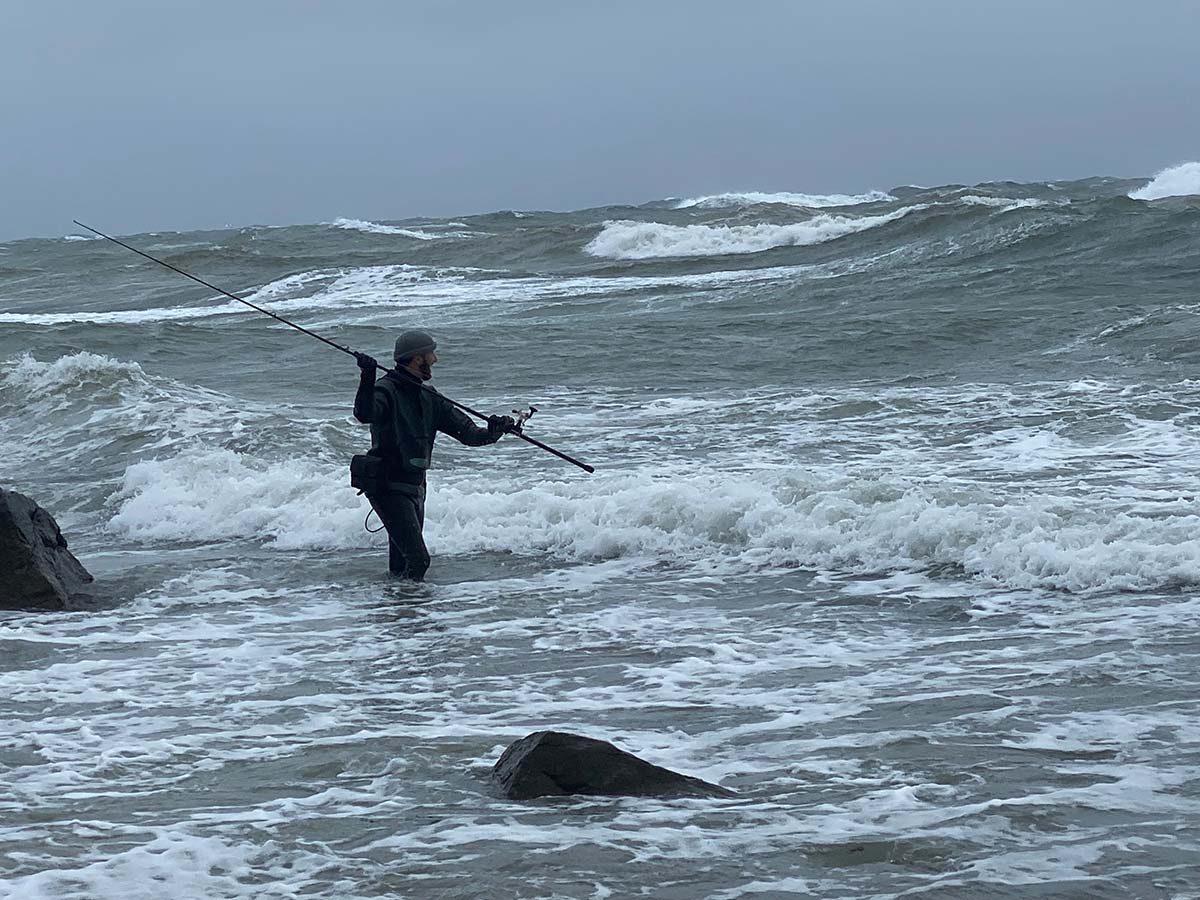
The Phenomenon
The reason why the stripers and bluefish get on the feed during these conditions in Montauk is debated by fishermen still. Whether it’s the strong winds pushing an array of different baits on the shoreline, or the drop in the barometric pressure, one of these factors turns the bite on in Montauk. It might even be a combination of all the factors but the bottom line is when it’s on, it’s on!
While Montauk contains a vast amount of surfcasting terrain that covers sand beaches, boulder fields, bays, coves and inlets, the majority of focus for the northeast blow is the north side of the lighthouse in combination with the outgoing tide. The main idea behind this is that the direction of the wind is right in your face as opposed to a cross wind that will be nearly impossible to fish when it’s blowing over 30 miles an hour. Another thought that goes along with the concept of bait is that the direction of the blow with the outgoing tide pushes all the bait into the points and coves on the north side—essentially at your feet in some cases.
While the south side of the lighthouse holds fish during these fishing conditions, I’ve found that fishing for them under them is a very tough and dangerous task. Plus the wind direction on that side of the point makes it harder also.
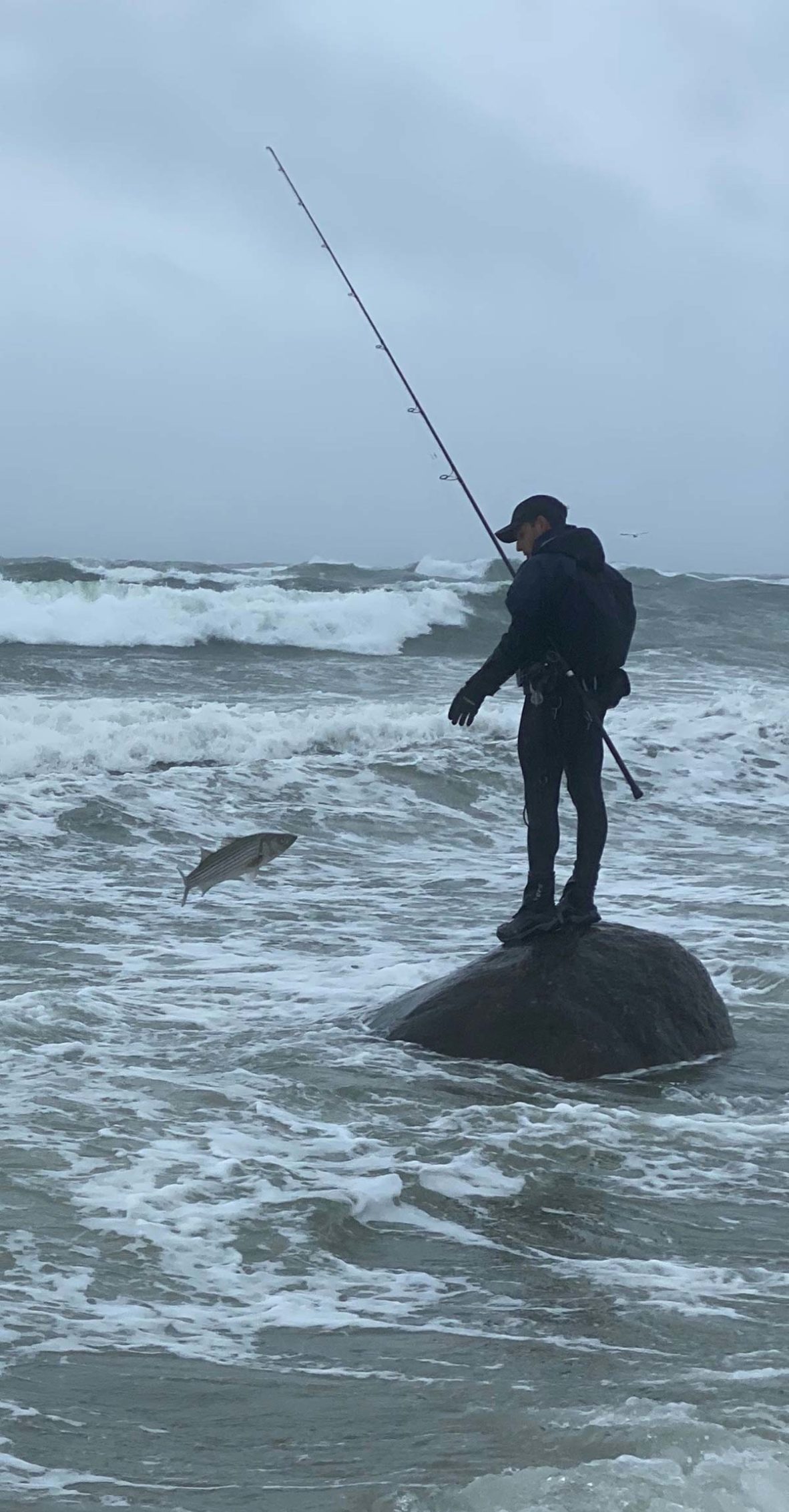
Big Guns Come Out
For big waves and big winds, big tackle is required—you can’t skimp this. When you have winds from 30 to 40 plus miles an hour in your face and the wave heights are over 10 feet in some situations, you’re going to want a rod and reel that can cast into that and take the abuse. For me, this would be a surf rod of at least 10 feet. I personally fish a 10-foot, 6-inch St. Croix Legend rated from 1 to 6 ounces but some other great options for these kinds of conditions are the Lamiglas 1321M, Century KNE1326 and the ODM NEX-1116. Using a rod between 10 and 11 feet will help you achieve the distance you need to put your lure into fishable water while keeping your line above the break of the wave for better retrieves and feeling for bites.
When it comes to reel for tackling a Nor’easter, I have limited my choice down to one reel type—Van Staal—more specifically the VSX 275 model. While the 275 may seem like a large reel with a huge amount of line capacity, it just doesn’t come down to that a striped bass will never take the 500-plus yards of 40 pound braid the reel will hold. It’s more about the retrieve of the reel. This model boasts 40-inches per turn. The reason for needing such a high line retrieve in these conditions is that the moments you cast and your lure hits the water when the wind is blowing, you need to start cranking to take up all the slack in a hurry. If you do end up with a slack line, you could get snagged easily in the rocks along the shallow north side of the point, won’t be able to feel a sudden bite as soon as the lure hits the water or you just won’t have the cranking power to get that 30-plus pound striper landed in a sufficient amount of time. While some other reels are on par with Van Stall as far as line retrieve goes, the don’t match the sealed nature of the reel and its durability when fished in the extreme—the reel was simply engineered to fish these types of conditions and stay performing under the harshest of weather.
Line rounds out the rod and reel combo. My choice is power pro in 40 pounds. The line casts far enough to reach the fish but has the thickness to withstand the rocks it may rub on while fishing in Montauk. Some anglers go with 30 for the distance, which will also works but I found when fishing these conditions, the casting distance between 30 and 40 pound is minimal and the 40 will provide me with a little extra security. My leader is 60 pound Yo-Zuri fluorocarbon for its better abrasion properties in comparison to monofilament. I use a Spro barrel swivel when fishing these conditions in Montauk so this way if I do snap off, my other pre-made leaders with barrel swivels can be retied easily in windy conditions. The end of my leader has a 125 pound Tactical Anglers clip for effortless lure switches when need be.
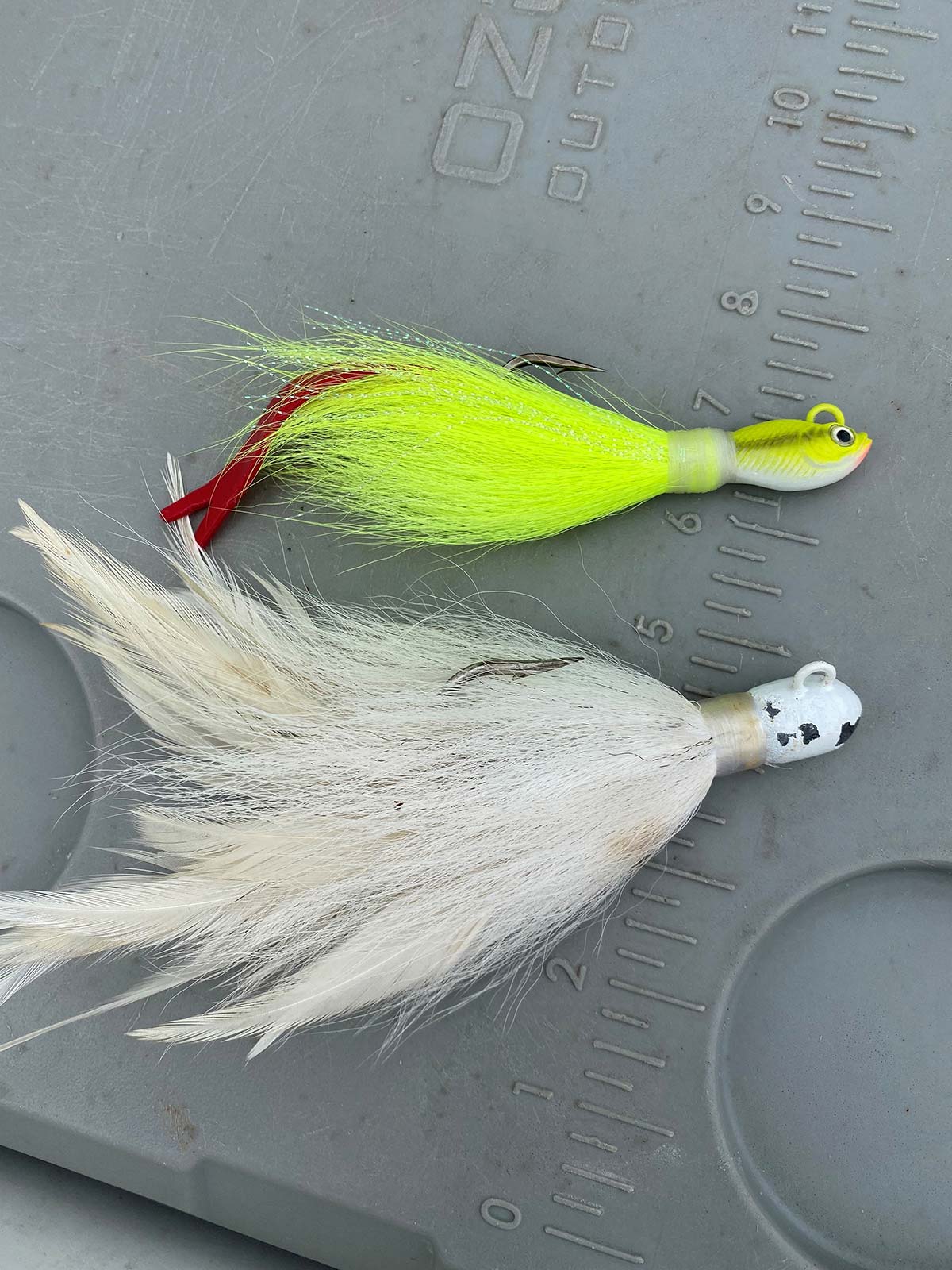
Debating Apperal
Another big debate when fishing these types of conditions, which I think shouldn’t really be much of a debate at all is whether you choose a wetsuit or waders to fish in. From fishing under these conditions many times, I’m a believer that a caster looking to head into the “washing machine” as we call it should only be wearing a wetsuit. Too many times I’ve been knocked on my butt trying to get to that perfect rock to fish off of. When this happens, you have to get up right away or else you will be bombarded by wave after wave, making for a dangerous situation. The extra mobility of a wetsuit will allow you to get up quicker as opposed to waders. Also in waders, even with a secure belt, you also will have the possibility of water enter. The bagginess of waders and a top will catch wind in these conditions too and make it tougher for you to move. Either a 3 or 5 mill wetsuit will work for the task at hand.
On my feet I like to use a pair of comfortable studded boots. My choice over several years has been Simms felt-bottom wading boots with 1800 model Grip Studs worn over wading socks. If you can find socks with gravel guards, buy them since getting little pebbles in you boot can be one of the worst feelings while walking. This kind of footwear will help you stay anchored when waves rapidity hit you. Even on a good rock, the waves will chop at your feet testing your balance and the quality of your spikes.
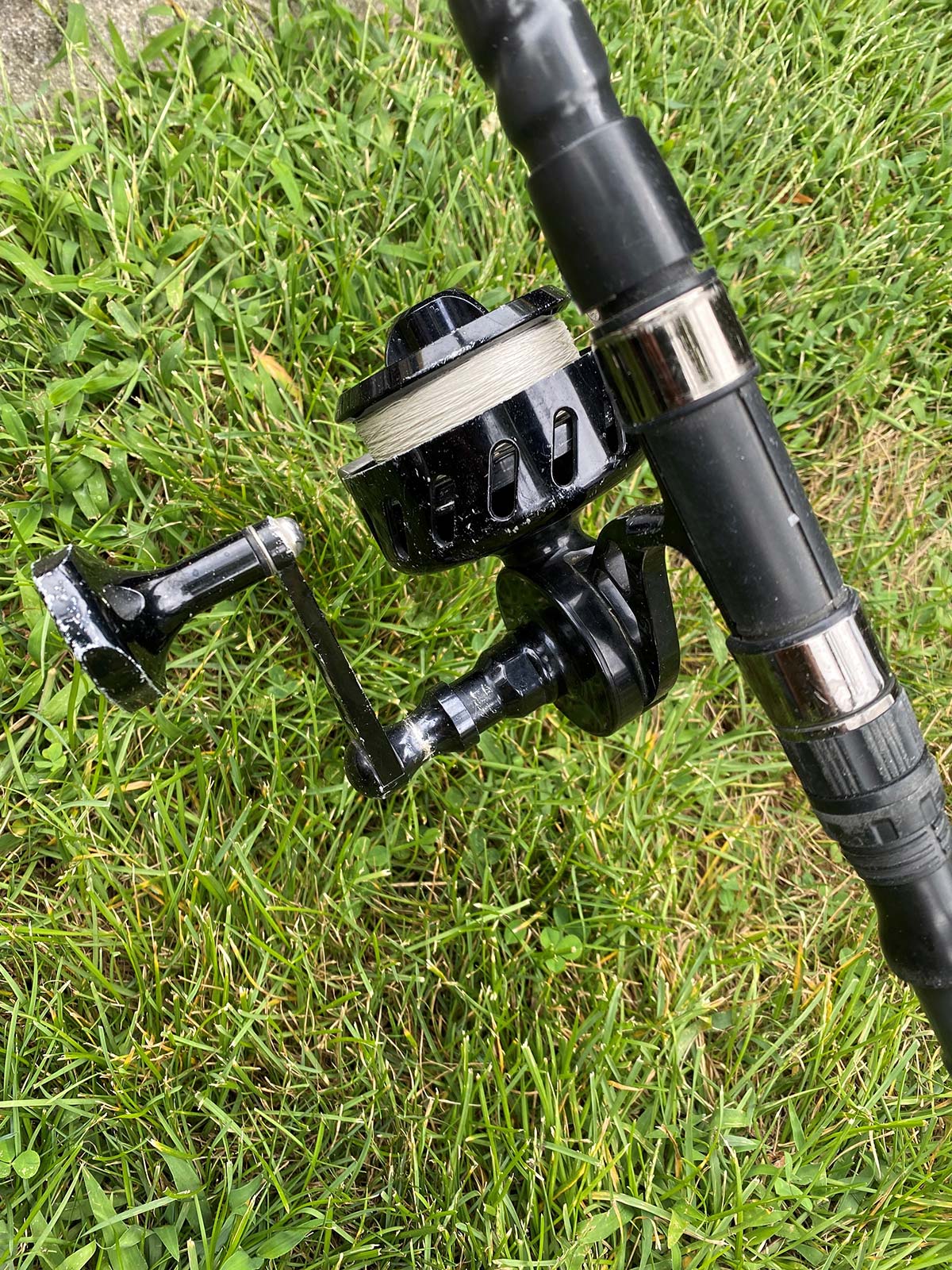
Think Simple On Lures
My choice of lure is extremely simple under these kinds of waves and wind—a white bucktail—2 to 3 ounces—with a Fat Cow Strip or Uncle Josh pork rind. Some might think a 2, 2-12 or 3-ounce bucktail is overkill but you do need the weight to “punch” into a stiff wind. Remember when I talked about the gear ratio on the reel? This is when it comes in handy. The high ratio will keep the heavier bucktail above the bottom and prevent snags. If you find you’re having a little trouble keeping it up in the column, either fish a denser bucktail or add a plastic curly tail grub for added buoyancy.
| NOT JUST MONTAUK! |
| Even though Montauk is known for great fishing in these conditions, many other spots will notoriously produce during a northeast blow. Some of those being all the inlets along the South Shore, the points on the North Shore of the island, Sore Thumb and even some of the bridges inside the bays will see a spark of life when the winds whip around from that direction. Remember to always use caution when fishing any of these spots though. Serious rip-currents can develop under these conditions. |
Tins do work under these conditions also but the staple of fishing Montauk when a nor’easter rolls through is a bucktail. Sometimes I carry chartreuse in my bag in case the water is a little stained. The stripers can pick up that color a little easier in dirty water.
Be safe when fishing this type of weather. While it can lead to some of the best fishing, it can also be some of the most challenging. Make sure to go over a list of equipment and double check it again. Carrying a dive knife along with good pliers and hook cutters in the truck are a few things I always remember when I’m suiting up. Be safe in the Mecca and have fun in the “washing machine”




